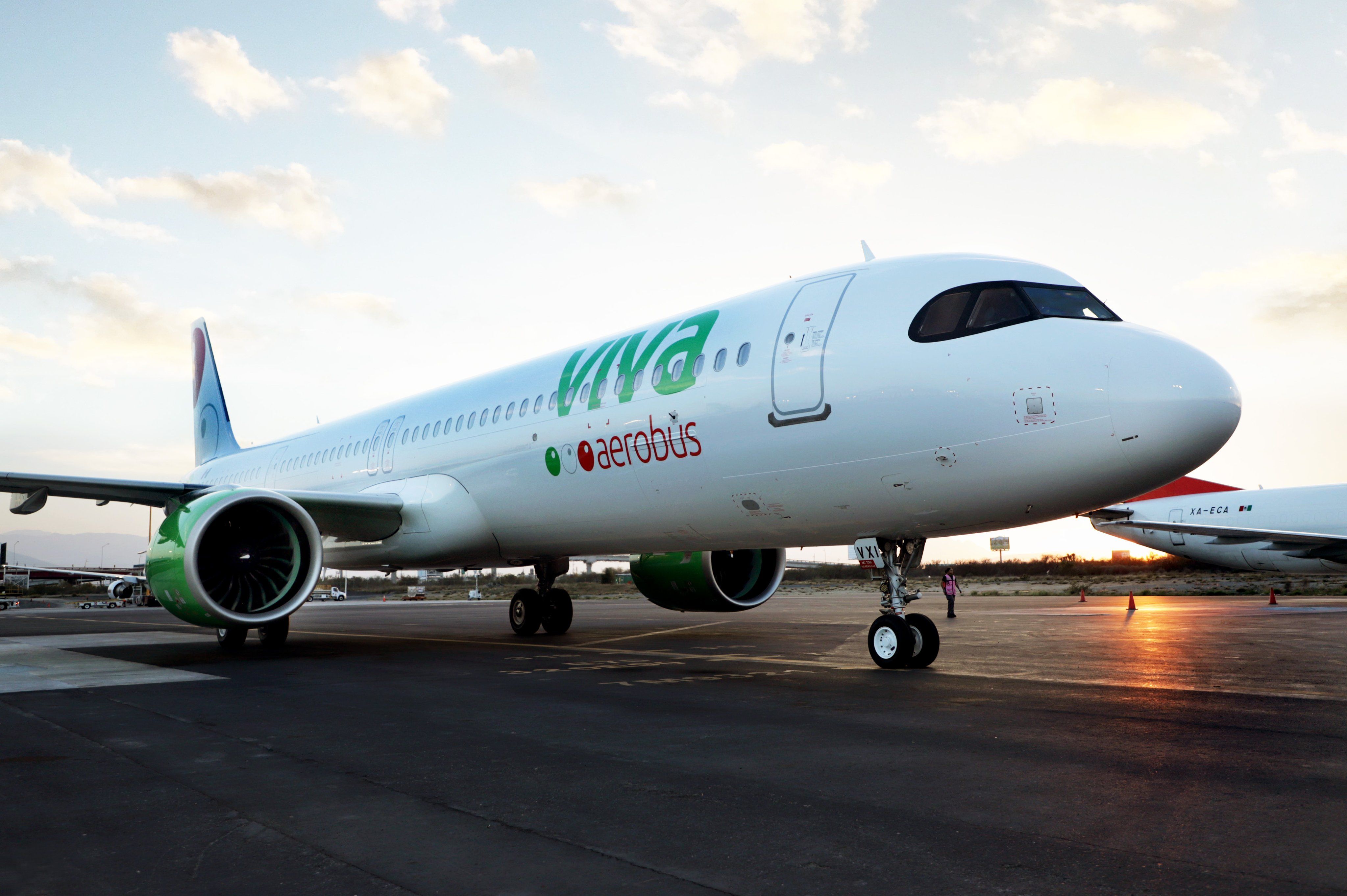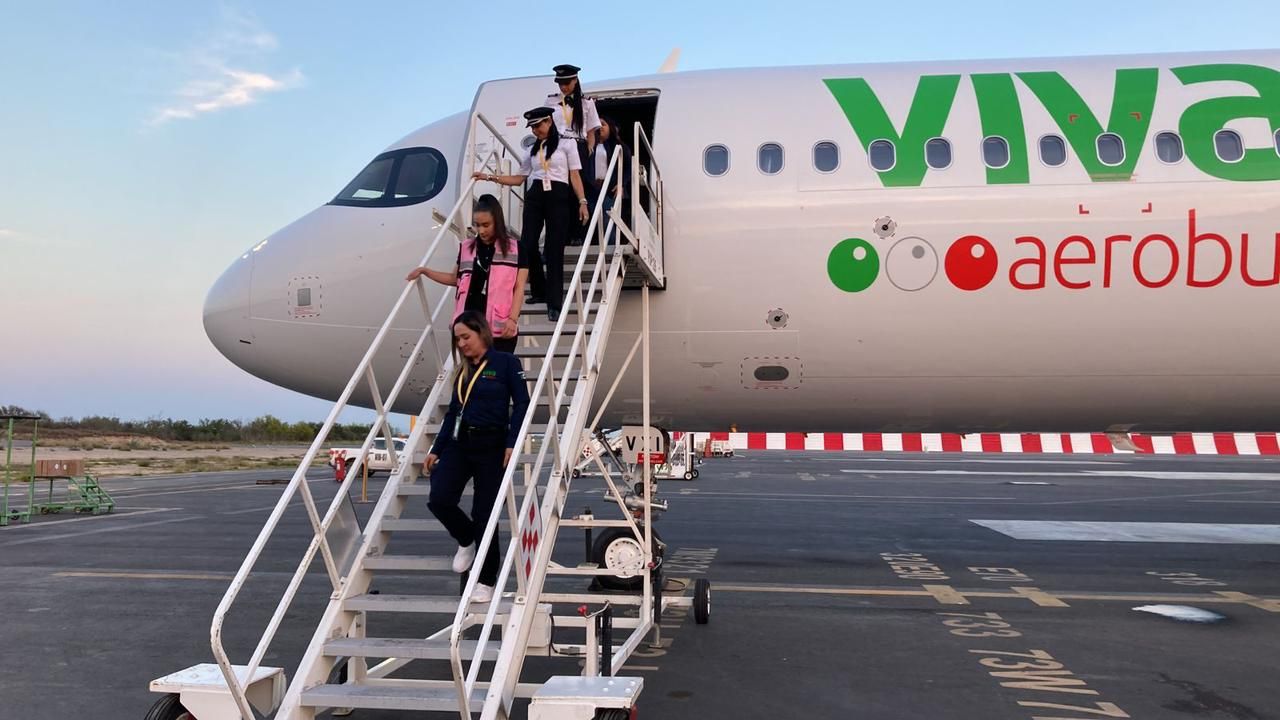Viva Aerobus, the Mexican low-cost airline, recently marked the arrival of its 70th aircraft with a special delivery flight. What made the occasion even more notable was that the flight was entirely led by a team of women, including captains, flight planners, legal staff, support engineers, maintenance personnel, and others.
A new plane for the Mexican ultra-low-cost carrier
The Airbus A321neo, registration XA-VXI, arrived at Monterrey International Airport (MTY) at 18:26. This narrowbody jetliner has the capacity to carry 240 passengers. The new aircraft was flown from Airbus’ headquarters in Hamburg, Germany, with stopovers at Keflavik International Airport (KEF), Iceland, and Bangor Airport (BGR), USA.
With this latest addition, Viva now has a total of 42 Airbus A320s and 28 Airbus A321s, making it the youngest fleet in Mexico and the fourth youngest in North America, with an average age of approximately 5.2 years.
According to data from ch-aviation, the airline still expects to receive 28 additional planes in the coming years. All the remaining deliveries are for Airbus A321neo planes. Between December 2021 and March 2023, the company’s fleet increased by 27%, growing from 55 jets to 70. Moreover, about 54% of Viva Aerobus’ fleet is now composed of neo narrowbodies, as it has 20 A320neos and 18 A321neos.
Viva Aerobus’ growth in 2022 and 2023
The airline's expanded fleet allows it to meet the growing demand for air travel and its strategy of expanding its routes. So far this year, Viva has announced several new services, including a new route from Cancun to Quito, a new route from Monterrey to Bogota, the addition of the Tijuana-Felipe Angeles route to its regular offerings, the resumption of the Monterrey-Mexicali route, and increased frequencies on the Guadalajara-Puerto Vallarta route.
Last year, Viva Aerobus helped Mexico reach a new all-time passenger record. The country had 106.8 million passengers, growing by 5.3% compared to the pre-pandemic traffic levels. The ultra-low-cost carrier led by Juan Carlos Zuazua handled 17.36 million domestic and 1.90 million international passengers, a 35.6% growth versus the previous year. Viva Aerobus bounced back from the COVID-19 pandemic, in terms of traffic, in 2021.
Between January and February 2023, Viva Aerobus carried 3.28 million passengers. It grew 22.6% versus last year’s first two months. Zuazua explained,
“February traffic had solid growth compared to 2022, reflecting the positive trends in the domestic and international market. Derived from the good environment, we continue our expansion efforts in the international market through our new Monterrey-Bogota route, increasing our growth in Mexico's third largest international passenger market.”
What is it like to travel with Viva Aerobus?
I recently had the opportunity to travel onboard Viva Aerobus on one of its flagship routes, Mexico City-Monterrey. The one-hour-and-a-half flight was good. Nonetheless, Viva Aerobus had to cancel my first flight, VB1120, due to an engine issue with one of its planes.
Find the latest South American aviation news here.
Onboard the airline’s fleet, you receive what you expect from an ultra-low-cost carrier, including high load factors (the plane was full), not much space between seats, and a sales menu offering sodas, cookies, and a few other snacks available only by paying with card. Flying less than two hours onboard a packed aircraft is no issue; I would say flying one of Viva Aerobus’ longest services (for instance Guadalajara-Bogota, which is 2,242 miles) could be a bit more painful.
Have you ever traveled with Viva Aerobus? How did you find the experience? Let us know in the comments below.


